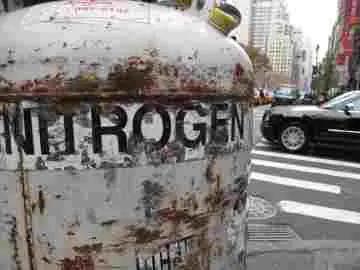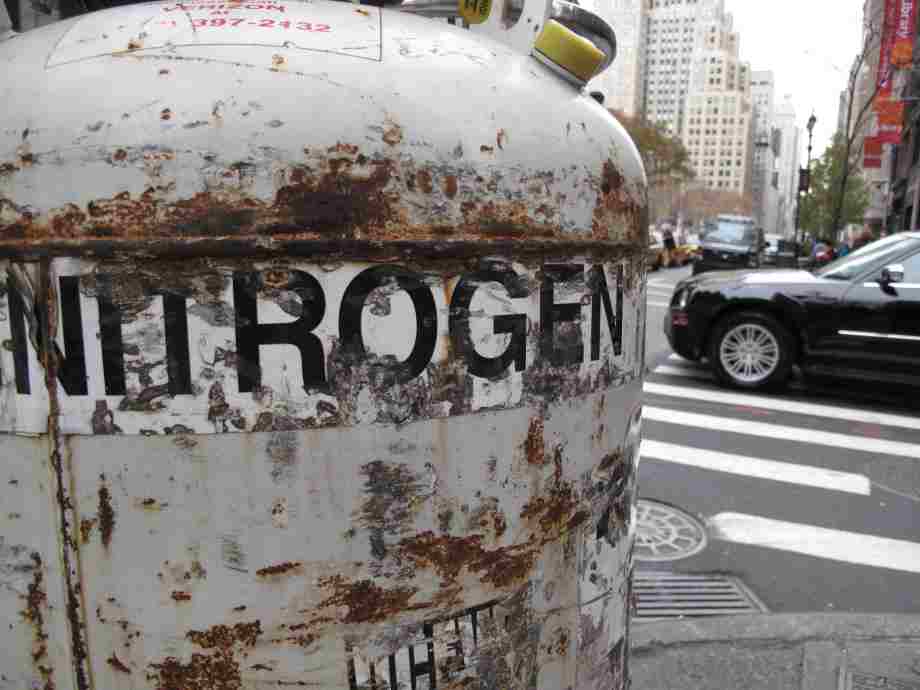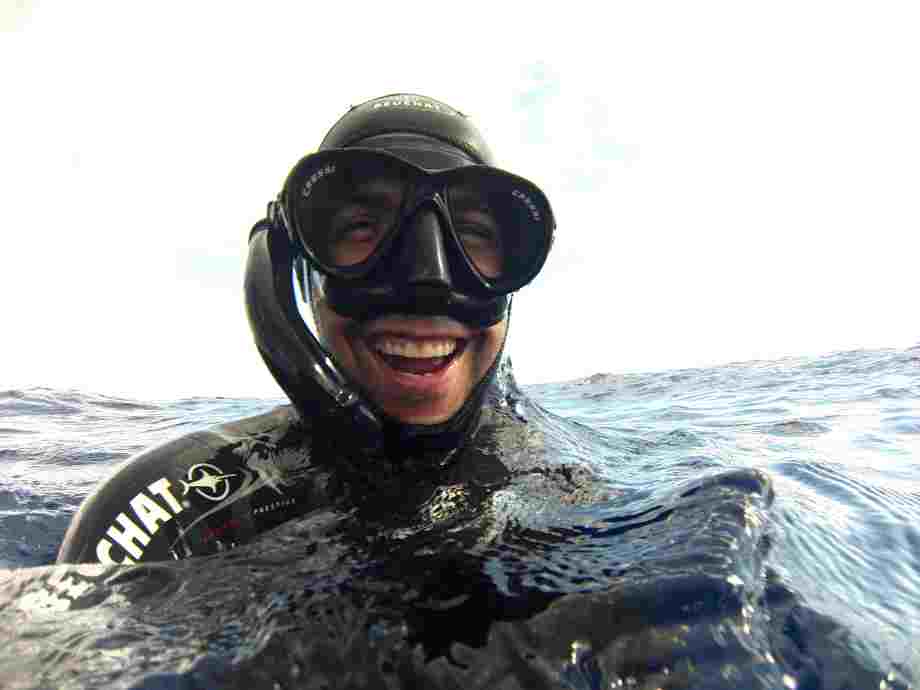- You are here:
- Home »
- Blog »
- Risks of freediving »
- Do Freedivers Get Nitrogen Narcosis? (& how to protect yourself against it)
Do Freedivers Get Nitrogen Narcosis? (& how to protect yourself against it)

There are countless disturbing stories out there of the effects of nitrogen narcosis on divers.
Some stories even tell tales of narcosis-induced divers completely losing their minds, stripping themselves of their scuba tanks and swimming to the depths of the ocean never to be seen again.
While such grim stories may be true for scuba diving…is it something you have to worry about as a freediver? Do freedivers even get nitrogen narcosis?
Long story short: yes, freedivers do get nitrogen narcosis. Nitrogen narcosis usually affects freedivers if they go deeper than about 85 feet ( ~ 25 meters deep). Nitrogen narcosis can be deadly if you’re not sure what causes it, what it feels like and how to treat it if you are affected by it.

The effects of nitrogen narcosis at depth can endanger even the most skilled freediver
What is nitrogen narcosis? A closer look.
Nitrogen narcosis is a perception-altering state that can happen to both scuba and breath-hold divers when they dive deep.
It’s often described as feeling similar to being drunk, yet with mild hallucinations, euphoria and numbness. Others suggest the feeling of nitrogen narcosis is similar to that of inhaling nitrous oxide. This can be from either inhaling the gas from canisters used in whipped cream (not recommended!) or the gas dentist’s use during operations.
What causes nitrogen narcosis in freedivers?
To understand what causes nitrogen narcosis, let’s first go over how nitrogen even gets into your blood in the first place.
Firstly: the air you and I breathe above the water is made up of 78% nitrogen, 21% oxygen and about 2% mixed gases like carbon dioxide, argon etc. So whenever you inhale air at surface level under normal pressure, you’re not only inhaling oxygen, but also nitrogen and other gases.
But, the thing is, your body doesn’t absorb nitrogen into your blood stream under normal surface level pressure. It only absorbs oxygen. The nitrogen you inhale, is simply exhaled out again without interfering with your brain chemistry.
But when you take a breath of air and travel deep underwater; the gases (including nitrogen) in your lungs are more likely to dissolve into your bloodstream.
So the deeper you go, the more the nitrogen in your lungs dissolves into your blood stream and travels to your brain. And nitrogen traveling to your brain is what causes you to feel nitrogen narcosis.
So at it’s core: nitrogen narcosis is caused by having air in your lungs under ever increasing depth (pressure).
At what depth can you get nitrogen narcosis as a freediver?
Before answering this, let me make it clear that there isn’t a hard and fast answer here.
The depth you feel nitrogen narcosis at, can vary from day to day and person to person. Things like your diet, height, weight and so on can make this answer different for everyone.
And lastly: this isn’t a medical definition. The information presented here is purely for educational purposes.
So with that out of the way: at what depth can you get nitrogen narcosis?
You’ll usually start feeling it at around 85 feet (~ 25 meters) to 115 feet (~ 35 meters). At this point, you’re deep enough for the nitrogen in your lungs to start dissolving into your blood.
Interestingly enough, there’s a theory called the martini effect that outlines how nitrogen makes you feel as you descend. What the martini effect states is that for every 30 feet (10 meters) deep you dive, you’re essentially drinking one extra martini.
Nitrogen narcosis symptoms: what to watch out for as a freediver
If you’re underwater and experiencing one or many of the following; you could be affected by nitrogen narcosis:
- Euphoria: Feeling overconfident and incredibly happy for no particular reason.
- Feeling intoxicated: Slightly exaggerated emotions and thinking. Minor loss of motor control. Feels like you’ve gulped down a couple martinis.
- Feeling irritable: Quickly jumping to negative emotions. Rapidly becoming frustrated or annoyed.
- Numbness: Loss of touch in areas like your hands, face or toes. You may also have a more generalized loss of touch all over your body.
- Tunnel vision: Your peripheral vision may be darkened or black. Increased focus in center of vision; decreased ability to see side to side, up & down.
- Hallucinations: Seeing, tasting, hearing, touching and/or smelling things which do not exist or are not currently there with you.
- Disorientation: Somewhat or complete loss of direction.
- Lack of coordination: Lowered motor control. Inaccuracy when moving body parts to selected areas.
- Anxiety: Feeling overly concerned, stressed and worried. Raised heartbeat. Feeling like something awful is going to occur for no logical reason.
- Paranoia: Overly suspicious of other people and/or things. Constantly assuming others have negative intentions toward you.
- Reduced decision making speed: Taking a long time to process simple information and act on it.
- Cold shivers: Generalized cold or icy feelings shooting through your body.
- Confusion: Constantly misunderstanding simple and/or complex things.
- Impulsiveness: Rapidly jumping to conclusions with little or no thought involved.
- Cognitive impairment: An almost complete inability to think extensively over anything.
- Bad decision-making: Unknowingly following through on poor thoughts leading to bad outcomes and behavior.
Nitrogen narcosis death – is it possible?
Yes it is possible.
According to John Lippman, executive director of the Divers Alert Network (DAN), it is possible to die from nitrogen narcosis.
In his book, John says that after almost 295 feet (~ 90 meters) deep, death induced by nitrogen narcosis becomes a huge risk.
A recent study exploring the effects of inert gas narcosis in underwater divers; noted that of all the diver deaths in the world, 6% were directly caused by nitrogen narcosis.
Outside of this 6% direct death rate from narcosis, are also the indirect deaths from narcosis. What do I mean by indirect deaths? Indirect deaths are the drownings and underwater blackouts that come from the negative effects of nitrogen narcosis (eg: confusion, loss of direction etc).
For example, when affected by nitrogen narcosis, you may feel intense euphoria and a lower level of anxiety. This can give you a false sense of confidence and trick you into swimming deeper than you should, without any concern for your safety…and then you black out and drown. So, in this case your direct cause of death was from drowning, which was indirectly caused by narcosis.
So what does all this mean? The percentage of freediver deaths caused by nitrogen narcosis, should likely be higher than 6%, because this figure doesn’t take into account indirect deaths from narcosis.
For all these reasons, nitrogen narcosis can be deadly if you don’t take proper steps to avoid it.
How to prevent nitrogen narcosis
The number one way to prevent nitrogen narcosis is to not descend passed 85 feet (~ 25 meters) deep. Most people will not feel narcosis before this point.
Does that mean freedivers should never dive below 85 feet deep? No, it doesn’t mean that at all.
In fact, as a freediver, you’ll probably get bored hovering above 85 feet deep the entire time. Eventually, you’ll want to go deeper.
If so, do so carefully. Let your body and brain get used to the effects of narcosis. And only go to depths you feel you are prepared for. If you feel any signs of narcosis, stay relaxed and ascend back up again. And of course, make sure you’re wearing a dive watch, have a diving line or have some way of knowing how deep you are!
Some other things you can do that can help prevent nitrogen narcosis:
- Long surface interval times: Having high carbon dioxide levels in your body can make the effects of nitrogen narcosis worse. Therefore, when doing repetitive dives, make sure you wait twice as long on the surface as the length of your previous dive. This will help flush out carbon dioxide from your body and prevent narcosis.

A good way to avoid nitrogen narcosis is to spend 2x as long on your surface interval as your previous dive.
- Lowering number of repetitive dives per day: Doing a huge number of deep, repetitive breath-hold dives in a single day causes a build-up of nitrogen in your body’s tissues. Therefore, you shouldn’t push things too far when doing repetitive diving. Know your limits and follow the surface interval rule.
- Avoid drugs and alcohol: This one should be pretty obvious. You shouldn’t dive under the influence of any mind-altering drug as it could act as a catalyst for nitrogen narcosis.
- Don’t dive tired: Scuba diving when fatigued has been noted to increase the likelihood of getting narcosis. This could also apply to freediving, so make sure you’ve had a good night’s sleep before hand!
- Take a freediving course: Many freediving instructors have felt nitrogen narcosis before. They usually have very specific advice you can follow when avoiding narcosis. Above is some specific advice, but other instructors have their own 2 cents which can be helpful.
Nitrogen narcosis treatment
As soon as you start to feel the onset of nitrogen narcosis; ascend. The lessening of pressure will decrease the effects of the nitrogen gas.
Once you go up to a shallower depth or return to the surface, you should feel better after a few minutes. If you still feel the narcosis after some time, go see a medical professional. There’s a good chance you’ve got something other than narcosis or something more serious that needs treating.
Nitrogen narcosis vs the bends: what’s the difference?
Both nitrogen narcosis and the bends (decompression sickness) revolve around nitrogen entering the bloodstream. The core difference is in whether the nitrogen stays dissolved in your blood or not.
Nitrogen narcosis is triggered by diving too deeply and/or diving too many times in a single day. Your body has too much nitrogen dissolved in your blood & tissues. This then makes you feel slightly intoxicated, confused, numb etc.
Nitrogen narcosis typically lasts only a few minutes and is easier to treat (simply ascend). As a freediver, it’s more likely you’ll be affected by nitrogen narcosis, than by decompression sickness. And that’s good, because nitrogen narcosis is much less dangerous!
Decompression sickness or ‘the bends’ is triggered by rapid pressure changes from ascending too quickly from a deep dive. This then causes nitrogen to expand and bubble out of your blood.
The key difference here, is that with decompression sickness, the nitrogen goes from being dissolved in your blood, to bubbling out and separating. With nitrogen narcosis, the nitrogen stays dissolved in your blood.
Like narcosis, decompression sickness can also impede your thinking process. But it also arguably has much more serious consequences. Nitrogen bubbles can cause incredible joint pain, paralysis and even death.
Decompression sickness, however, can occur hours or even a day after your dive and usually requires hospitalization. It’s also worth noting that it’s incredibly rare among freedivers, but still possible.
The best way to avoid decompression sickness as a freediver, is to:
- Follow the surface interval rule properly (spend 2 x as long on the surface as the length of your last dive).
- Don’t do too many dives in one day.
- Don’t dive too deep without training. If you want to keep pushing yourself deeper and deeper, build to your target depth over time. That way you prepare your body and learn you limits while minimizing your chances of getting the bends.
About the Author Gerrie van Niekerk - Apnealogy
Gerrie is a passionate Freediver, Spearfisher, Digital Marketer, and author for the Apnealogy website. Gerrie is an SSI Level 1 certified Freediver who loves geeking out about freediving and spearfishing gear and lives for his family and adventure.


